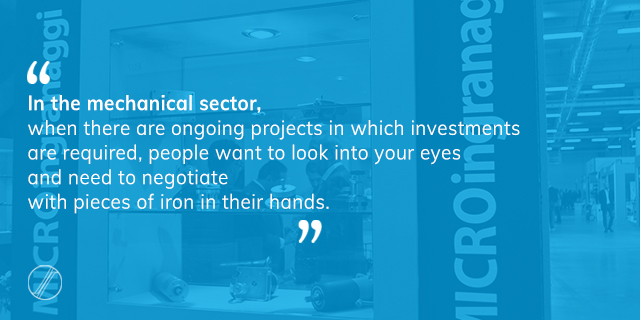New customers often contact MICROingranaggi with the typical approach one has with a gear manufacturer: I give you the drawings and you produce the part. Then, during various discussions, they discover we can also provide other types of support. For example, collaborating with their technical department we can work towards improving a gearbox, making it quieter, more efficient, smaller or cheaper (with interventions on the industrialization of the product). And, more importantly, they discover that we can also mount the assemblies and subassemblies, hence managing the entire production chain (which, inter alia, is simply the verticalized supply concept I spoke about a few months ago).
I have made this introduction as I believe it is important to clarify
certain fundamental rules.
Rules strictly related to these topics but which, very often, are not clear to current or potential customers.
Let’s take a practical example. Some time ago we received a request from a company requiring a mounted assembly unit. Nothing new so far. However, they started by requesting the prices of each individual component of the assemblies.
This is the first aspect that it is vital to clarify:
if someone needs an assembly, the important thing to know is the cost of the assembly, and not the prices of each individual component.
Why do I mention this? I mention this because if the customer is able to discover the price of each individual component he may look for (and find) suppliers who are able to quote lower prices and decide to purchase certain components from such suppliers, to minimize the final cost of the assembly.
But if I am the main contractor – hence responsible for the supply of the mounted assembly unit – I am the one who has to qualify each individual supplier before commencing the assembly works.
If this is not the case, who can ensure me that the parts purchased from a supplier who we have not qualified or selected, are exactly what I need and, above all, that they comply with our quality requirements?
Because, and this is the second aspect that it is vital to clarify:
it is a huge error to assume that the technical drawing is the identity card of a product and that all suppliers are capable of producing it in the same manner.
There are endless details that may not be indicated on a technical drawing. Think for example of the surface finishes, or certain geometric tolerances or – in the gear section – the quality grades that are often not mentioned. And so on.
The incomplete drawings we talked about some time ago spring to mind.
But at that point, if there is an error on the finished assembly unit, I am the main contractor responsible for the supply, even if the error is caused by someone else…






